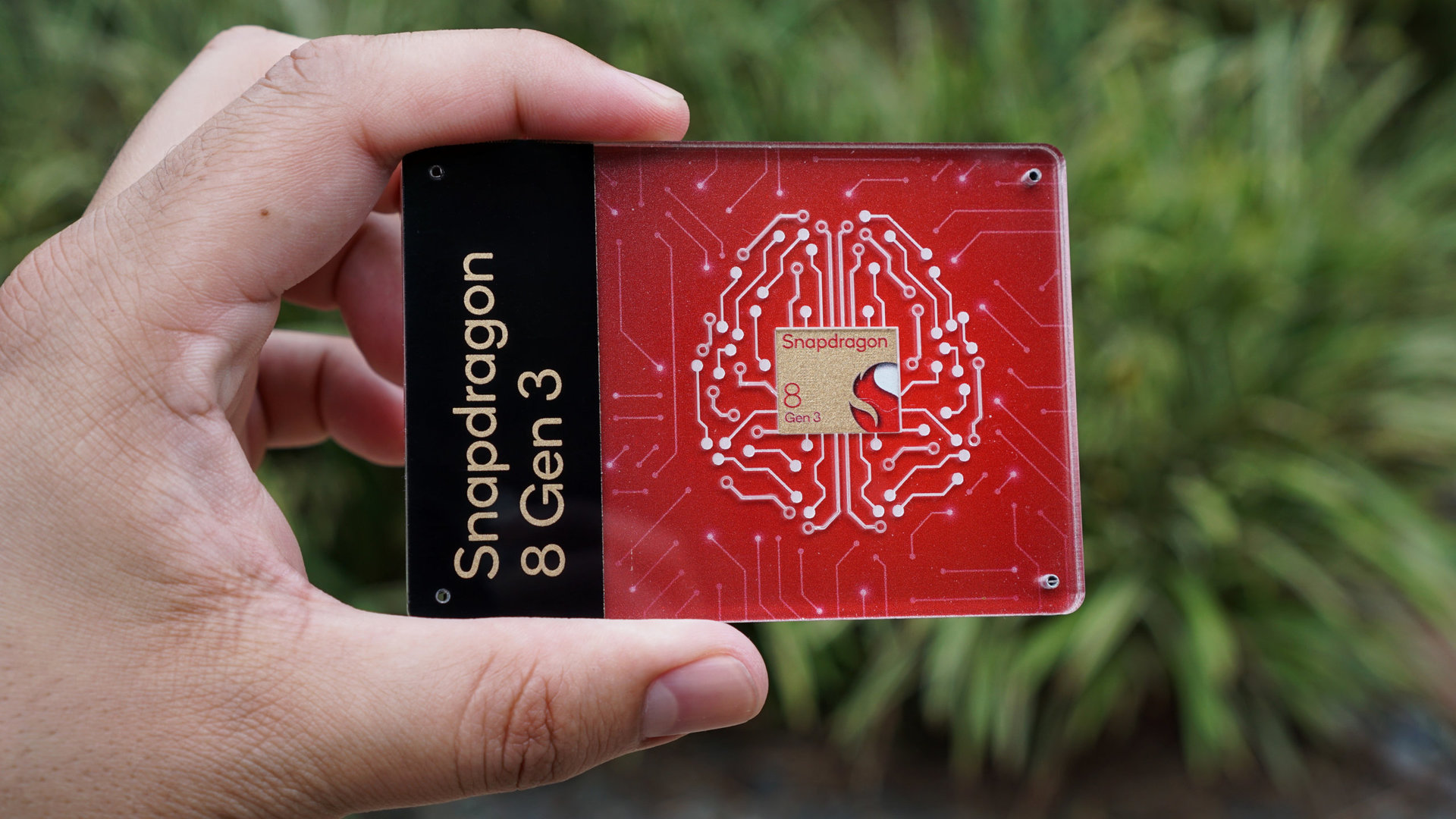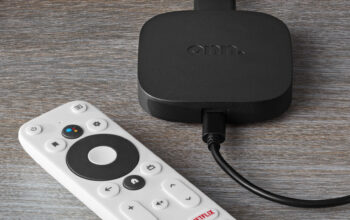
Hadlee Simons / Android Authority
Qualcomm’s next-gen Snapdragon 8 Gen 3 processor is now official and on its way to powering, no doubt, some of the best Android smartphones of 2024. While we wait, we grabbed one of Qualcomm’s Snapdragon 8 Gen 3 reference phones and ran our usual suite of performance benchmarks to see how the chip stacks up.
For background, Qualcomm’s reference phone is powered by a Snapdragon 8 Gen 3 at standard clocks, a whopping 24GB LPDDR5X RAM at 4.8GHz, 512GB of fast UFS4.0 storage, and a 144Hz 6.65-inch 2,340 x 1,080 resolution display. That’s a very high-end setup but should reflect next-gen phones heading our way in 2024, perhaps bar the RAM count.
First up, let’s compare Qualcomm’s reference points against the previous generation. Starting with GeekBench 5 (GeekBench 6 released after the 8 Gen 2), we see a 15% jump in single-core performance with the move to the powerhouse Arm Cortex-X4 core from last year’s X3. Multi-core performance sees a much larger boost, owing to the novel 1+5+2 CPU core setup, which introduces an extra middle CPU core (a Cortex-A720) at the expense of one smaller low-power core. Peak performance is up 31%, a potential game changer for heavily multithreaded workloads.
PCMark scores are also up by 15%, showcasing that pairing the phone with high-performance memory can still lead to a significant performance boost across various common workloads, from data manipulation to video editing. However, this is the area where manufacturer implementations differ greatly from the peak performance offered by Qualcomm’s reference unit.
Qualcomm claims its latest Adreno GPU is 25% faster than the previous generation, which seems to bear out as a minimum. Our 3DMark Wild Life scores jumped by a colossal 40%. The Snapdragon 8 Gen 3 has made Vulkan-specific API improvements in addition to broader performance enhancements, which explains the larger-than-anticipated performance differential here. This is obviously good news for gamers; Vulkan is the increasingly popular cross-platform API and is used for ray tracing. More on that in a moment.
We’ve tracked Qualcomm’s reference phones since the introduction of the Snapdragon 8 moniker. Looking back over three generations (and the 8 Gen 1 Plus refresh), there are some frankly colossal gains on display. In just three short years, peak multi-core performance is up by over 80%, according to GeekBench, as is graphics performance. Not to mention that energy efficiency continues to improve, ensuring that these extra capabilities don’t come at the expense of battery life. And that’s without bringing up the gains in networking and machine learning capabilities. Modern flagship smartphone chips continue to impress.
How does the Snapdragon 8 Gen 3 compare to current phones?
Qualcomm’s Snapdragon 8 Gen 3 Reference Phone represents an idealized level of performance that 2024 flagship smartphones probably won’t quite hit. This is definitely worth keeping in mind when comparing benchmark numbers against other handsets. Nevertheless, let’s take a look at where the next-generation Android phones could place compared to today’s most powerful models.
Starting with the CPU, Apple’s A17 Pro is likely to retain a healthy single-core CPU lead owing to its impressive custom Arm design. Still, the use of five mid-tier CPU cores and two power efficiency cores appears to lend the Snapdragon 8 Gen 3 an advantage in heavily threaded workloads, which are quite commonplace. Either way you slice it, the latest chips from Apple and Qualcomm are seriously pushing ahead from last generation’s models in this regard.
Graphics again showcases a colossal lead for the Snapdragon 8 Gen 3 over current smartphones powered by the Snapdragon 8 Gen 2. The new chip also blitzes past Apple’s A17 Pro by 32% in 3DMark’s Wildlife Extreme test and 37% in the Solar Bay ray-tracing test (note that 3DMark Wildlife scores are capped on iPhones due to a 60fps lock, so we won’t draw comparisons there). Speaking of ray tracing, Qualcomm touts a 50% gain over the 8 Gen 2, and we actually saw a 58% uplift here. Impressive, but Qualcomm’s figure is likely an average across a range of ray-tracing workload levels.
All this graphical grunt looks impressive, but sustained performance has been an issue in previous generations, and this is likely to also be the case with the Snapdragon 8 Gen 3. Our reference phone initially held up well in the air-conditioned room during our stress test, beating out many of the previous generation models we’ve tested. However, performance collapses to less than half of its initial performance by the end of run 9 (9 minutes). The Wildlife Stress Test is more demanding than many games but does indicate that high-end gamers and emulator fans will want to keep an eye on thermals and frame rates when we see retail handsets launch.
What to expect from 8 Gen 3 flagship phones

Hadlee Simons / Android Authority
Clearly, the Snapdragon 8 Gen 3 is more performant than last year, but it’s shaping up to be one of the more notable leaps in recent time. With a huge boost to graphics and ray tracing performance and a more novel CPU setup, the 8 Gen 3 blasts past the 8 Gen 2 and Google’s Tensor G3, and appears to score wins over Apple’s powerhouse A17 Pro as well. We’re already eager to see how MediaTek’s upcoming Dimensity 9300 compares. And that’s just raw performance numbers. The Snapdragon 8 Gen 3 also boasts machine learning improvements to run real-time generative AI, XPAN Wi-Fi audio technology, and Apple-like seamless connectivity.
There’s plenty to be excited about for 2024 Android flagship phones, but we’ll hold out our final verdict until we have them in hand. After all, we’ll have to dive deeper into commercial handset results before we can answer questions about sustained performance and heating more thoroughly. Still, we’re cautiously optimistic.



